Courses

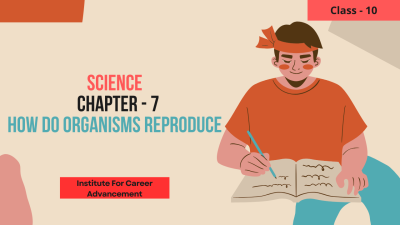
 Compare
Compare
Here's a short description of reproduction: The Big Picture: It's all about creating new individuals to keep the species going. There are two main ways organisms reproduce: Asexual Reproduction: One parent is involved, and the offspring are genetically identical to the parent (think of taking cuttings from a plant). Sexual Reproduction: Two parents are involved, and the offspring have a mix of genes from both parents (like you inheriting traits from your mom and dad). Asexual Methods: Some organisms reproduce by fission (splitting in two), budding (growing a new individual from the parent), or spore formation (tiny reproductive units that grow into new organisms). Sexual Methods: Sexual reproduction involves the fusion of sex cells (egg and sperm) to form a zygote, which develops into a new organism. এখানে প্রজননের একটি সংক্ষিপ্ত বিবরণ দেওয়া হলঃ বড় ছবিঃ প্রজাতিটি চালিয়ে যাওয়ার জন্য এটি নতুন ব্যক্তি তৈরি করার বিষয়ে। জীবের পুনরুত্পাদন করার দুটি প্রধান উপায় রয়েছেঃ অযৌন প্রজনন (Asexual reproduction): পিতামাতার মধ্যে একজন জড়িত, এবং সন্তানরা পিতামাতার সাথে জিনগতভাবে অভিন্ন। (think of taking cuttings from a plant). যৌন প্রজননঃ দুই পিতামাতা জড়িত, এবং সন্তানদের উভয় পিতামাতার কাছ থেকে জিনের মিশ্রণ রয়েছে। (like you inheriting traits from your mom and dad). অযৌন পদ্ধতিঃ কিছু জীব বিভাজনের (দুই ভাগে বিভক্ত) মাধ্যমে প্রজনন করে। (tiny reproductive units that grow into new organisms). যৌন পদ্ধতিঃ যৌন প্রজননে যৌন কোষের (ডিম এবং শুক্রাণু) সংমিশ্রণে একটি জাইগোট তৈরি হয়, যা একটি নতুন জীবের মধ্যে বিকশিত হয়।
0 Lessons
Hours

 Compare
Compare
In Class 10, Control and Coordination deals with how our body senses the environment and reacts accordingly. Here's a short description: The Big Picture: It's about how different body parts work together to allow you to respond to your surroundings. Imagine dodging a ball - your eyes see it, your brain sends signals, and your muscles move you out of the way. Key Players: The nervous system (brain, spinal cord, nerves) acts as the control center, sending messages. The endocrine system (hormones) also plays a role in coordinating some responses. Sensing the World: Sense organs like eyes, ears, nose, tongue, and skin detect changes (light, sound, smell, taste, touch). Taking Action: Muscles receive signals from the nervous system and contract or relax, allowing you to move and react. দশম শ্রেণীতে, কন্ট্রোল অ্যান্ড কোঅর্ডিনেশন আমাদের শরীর কীভাবে পরিবেশকে অনুধাবন করে এবং সেই অনুযায়ী প্রতিক্রিয়া জানায় তা নিয়ে আলোচনা করে। এখানে একটি সংক্ষিপ্ত বিবরণ দেওয়া হলঃ দ্য বিগ পিকচারঃ এটি হল কীভাবে শরীরের বিভিন্ন অঙ্গগুলি একসাথে কাজ করে যাতে আপনি আপনার আশেপাশে সাড়া দিতে পারেন। একটি বল এড়িয়ে যাওয়ার কথা কল্পনা করুন-আপনার চোখ এটি দেখতে পায়, আপনার মস্তিষ্ক সংকেত পাঠায় এবং আপনার পেশীগুলি আপনাকে পথ থেকে সরিয়ে দেয়। মূল খেলোয়াড়ঃ স্নায়ুতন্ত্র (মস্তিষ্ক, মেরুদণ্ড, স্নায়ু) নিয়ন্ত্রণ কেন্দ্র হিসাবে কাজ করে, বার্তা প্রেরণ করে। অন্তঃস্রাবী তন্ত্রও (হরমোন) কিছু প্রতিক্রিয়ার সমন্বয়ে ভূমিকা পালন করে। বিশ্বকে অনুধাবন করাঃ চোখ, কান, নাক, জিহ্বা এবং ত্বকের মতো ইন্দ্রিয়গুলি পরিবর্তনগুলি (আলো, শব্দ, গন্ধ, স্বাদ, স্পর্শ) সনাক্ত করে। পদক্ষেপ নেওয়াঃ পেশীগুলি স্নায়ুতন্ত্র থেকে সংকেত গ্রহণ করে এবং সঙ্কুচিত বা শিথিল হয়, যা আপনাকে নড়াচড়া এবং প্রতিক্রিয়া করতে দেয়।
0 Lessons
Hours

 Compare
Compare
Carbon belongs to the 14th group of the periodic table. Carbon forms organic as well as inorganic compounds. Originally compounds like urea, sugars, fats, oils, dyes, proteins, vitamins etc, which were isolated directly or indirectly from living organisms such as animals and plants were called organic compounds. In contrast, compounds like common salt, marble, alums, nitre, blue and green vitriols etc. which are isolated from non−living sources such as rocks and minerals were called inorganic compounds. কার্বন পর্যায় সারণির 14তম গ্রুপের অন্তর্গত। কার্বন জৈব এবং অজৈব যৌগ গঠন করে। মূলত ইউরিয়া, চিনি, চর্বি, তেল, রঞ্জক পদার্থ, প্রোটিন, ভিটামিন ইত্যাদির মতো যৌগগুলি, যেগুলি প্রত্যক্ষ বা পরোক্ষভাবে প্রাণী ও উদ্ভিদের মতো জীব থেকে বিচ্ছিন্ন ছিল, সেগুলিকে জৈব যৌগ বলা হত। এর বিপরীতে, সাধারণ লবণ, মার্বেল, আলুম, নাইট্রে, নীল এবং সবুজ ভিট্রিওল ইত্যাদির মতো যৌগ। যেগুলি শিলা ও খনিজ পদার্থের মতো অ-জীবন্ত উৎস থেকে বিচ্ছিন্ন, সেগুলিকে অজৈব যৌগ বলা হত।
0 Lessons
Hours
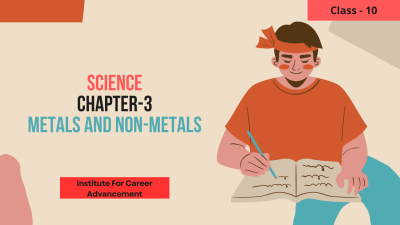
 Compare
Compare
Elements are classified into two basic categories, metals and non-metals. Metal And Non-metals There are about 90 elements, up to Uranium, that are found naturally. Another 20 elements, beyond Uranium, called trans-uranium elements, have been produced artificially in the laboratories by nuclear reactions. Two elements, Technetium (Tc) and Promethium (Pm) that occur below Uranium are unstable in nature. Elements can be classified by the physical and chemical properties that they display Metals are defined as those elements which possess lusture, are malleable and ductile and good conductors of heat and electricity. Or Metals are the elements which form positive ions by losing electrons i.e. they are electropositive elements. For e.g. sodium, magnesium, potassium, aluminium, copper, silver, gold etc. Non-metals are defined as those elements which do not possess lusture and are neither good conductors of heat and electricity nor malleable. They are not ductile but are brittle. Or Non-metals are the elements which form negative ions by gaining electrons i.e. they are electronegative elements. For e.g. carbon, hydrogen, oxygen, nitrogen, sulphur, bromine etc. উপাদানগুলিকে দুটি মৌলিক বিভাগে শ্রেণীবদ্ধ করা হয়, ধাতু এবং অ-ধাতু। ধাতু ও অ-ধাতু ইউরেনিয়াম পর্যন্ত প্রায় 90টি মৌল প্রাকৃতিকভাবে পাওয়া যায়। ইউরেনিয়ামের বাইরে আরও 20টি উপাদান, যাকে ট্রান্স-ইউরেনিয়াম উপাদান বলা হয়, পরীক্ষাগারে পারমাণবিক বিক্রিয়ার মাধ্যমে কৃত্রিমভাবে তৈরি করা হয়েছে। ইউরেনিয়ামের নিচে থাকা দুটি মৌল, টেকনেটিয়াম (টি. সি) এবং প্রোমিথিয়াম (পি. এম) প্রকৃতিতে অস্থিতিশীল। উপাদানগুলিকে তাদের প্রদর্শিত ভৌত ও রাসায়নিক বৈশিষ্ট্য অনুসারে শ্রেণীবদ্ধ করা যেতে পারে। ধাতুগুলিকে সেই উপাদান হিসাবে সংজ্ঞায়িত করা হয় যেগুলি উজ্জ্বলতা ধারণ করে, নমনীয় এবং নমনীয় এবং তাপ ও বিদ্যুতের ভাল পরিবাহী। Or ধাতু হল এমন উপাদান যা ইলেকট্রন হারানোর মাধ্যমে ধনাত্মক আয়ন গঠন করে i.e। এগুলি ইলেক্ট্রোপজিটিভ উপাদান। e.g এর জন্য। সোডিয়াম, ম্যাগনেসিয়াম, পটাসিয়াম, অ্যালুমিনিয়াম, তামা, রূপা, সোনা ইত্যাদি। অধাতবকে সেই উপাদান হিসাবে সংজ্ঞায়িত করা হয় যার মধ্যে উজ্জ্বলতা নেই এবং তাপ ও বিদ্যুতের ভাল পরিবাহী বা নমনীয় নয়। এগুলি নমনীয় নয় কিন্তু ভঙ্গুর। Or অ-ধাতু হ 'ল উপাদান যা ইলেকট্রন i.e অর্জন করে নেতিবাচক আয়ন তৈরি করে। এগুলি হল তড়িৎঋণাত্মক উপাদান। e.g এর জন্য। কার্বন, হাইড্রোজেন, অক্সিজেন, নাইট্রোজেন, সালফার, ব্রোমিন ইত্যাদি।
0 Lessons
Hours
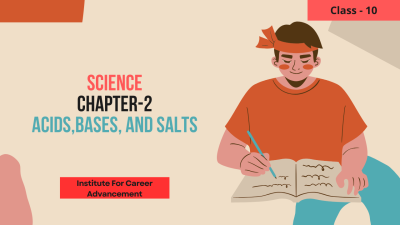
 Compare
Compare
This chapter delves into the fascinating world of acids, bases, and salts. Understanding their properties, reactions, and applications is crucial in the study of chemistry. Let’s explore the key concepts covered in this chapter. 1) Acids: Definition: Acids are substances that can donate protons (H+ ions) in a chemical reaction. Common Acids: Hydrochloric acid (HCl) Sulfuric acid (H2SO4) Nitric acid (HNO3) Acetic acid (CH3COOH) Citric acid (found in citrus fruits) Properties of Acids: Sour taste Turn blue litmus paper red React with metals to produce hydrogen gas React with carbonates to produce carbon dioxide gas Can neutralize bases 2) Bases: Definition: Bases are substances that can accept protons (H+ ions) in a chemical reaction. Common Bases: Sodium hydroxide (NaOH) Potassium hydroxide (KOH) Ammonia (NH3) Magnesium hydroxide (Mg(OH)2) Properties of Bases: Bitter taste Feel slippery or soapy Turn red litmus paper blue Can neutralize acids 3) Salts: Definition: Salts are formed by the reaction between acids and bases. They are compounds composed of positive and negative ions. Examples of Salts: Sodium chloride (NaCl) Potassium nitrate (KNO3) Calcium sulfate (CaSO4) এই অধ্যায়টি অ্যাসিড, ক্ষার এবং লবণের আকর্ষণীয় জগতে প্রবেশ করে। রসায়ন অধ্যয়নে তাদের বৈশিষ্ট্য, প্রতিক্রিয়া এবং প্রয়োগগুলি বোঝা অত্যন্ত গুরুত্বপূর্ণ। আসুন এই অধ্যায়ে অন্তর্ভুক্ত মূল ধারণাগুলি অন্বেষণ করি। 1) অ্যাসিডঃ সংজ্ঞাঃ অ্যাসিড এমন পদার্থ যা রাসায়নিক বিক্রিয়ায় প্রোটন (এইচ + আয়ন) দান করতে পারে। সাধারণ অ্যাসিডঃ হাইড্রোক্লোরিক অ্যাসিড (HCl) সালফিউরিক অ্যাসিড (H2SO4) নাইট্রিক অ্যাসিড (HNO3) অ্যাসিটিক অ্যাসিড (CH3COOH) সাইট্রিক অ্যাসিড (সাইট্রাস ফলগুলিতে পাওয়া যায়) অ্যাসিডের বৈশিষ্ট্যঃ টক স্বাদ বাঁক নীল লিটমাস কাগজ লাল হাইড্রোজেন গ্যাস তৈরি করতে ধাতুগুলির সাথে প্রতিক্রিয়া কার্বন ডাই অক্সাইড গ্যাস তৈরি করতে কার্বনেটগুলির সাথে প্রতিক্রিয়া বেসগুলি নিরপেক্ষ করতে পারে 2) বেসঃ সংজ্ঞাঃ বেসগুলি এমন পদার্থ যা রাসায়নিক বিক্রিয়ায় প্রোটন (H + আয়ন) গ্রহণ করতে পারে। সাধারণ ক্ষারসমূহঃ সোডিয়াম হাইড্রক্সাইড (NaOH) পটাসিয়াম হাইড্রক্সাইড (KOH) অ্যামোনিয়া (NH3) ম্যাগনেসিয়াম হাইড্রক্সাইড (Mg (OH) 2) ক্ষারসমূহের বৈশিষ্ট্যঃ তিক্ত স্বাদ পিচ্ছিল বা সাবানযুক্ত লাল লিটমাস কাগজ নীল তির্যক অ্যাসিড নিরপেক্ষ করতে পারে 3) লবণঃ সংজ্ঞাঃ অ্যাসিড এবং ক্ষারের মধ্যে বিক্রিয়া দ্বারা লবণ গঠিত হয়। এগুলি ধনাত্মক এবং ঋণাত্মক আয়ন দ্বারা গঠিত যৌগ। লবণের উদাহরণঃ সোডিয়াম ক্লোরাইড (NaCl) পটাসিয়াম নাইট্রেট (KNO3) ক্যালসিয়াম সালফেট (CaSO4)
0 Lessons
Hours
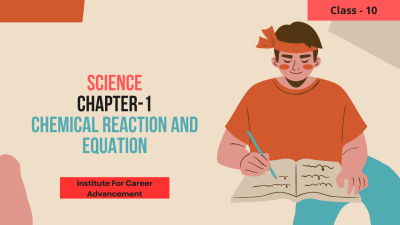
 Compare
Compare
Chemistry is defined as that branch of science which deals with the composition and properties of matter and the changes that matter undergoes by various interactions. A chemical compound is formed as a result of a chemical change and in this process different types of energies such as heat, electrical energy, radiation etc. are either absorbed or evolved. The total mass of the substance remains the same throughout the chemical change. The process involving a chemical change is called a chemical reaction. or A chemical reaction is a process which transforms one or more substances into new substances. or The process in which a substance or substances undergo change, to produce new substances with new properties, is known as chemical reaction. A chemical equation is a symbolic representation of an actual chemical change or the short-hand method of representing a chemical reaction in terms of symbols and formulae of the different reactants and products is called a chemical equation. রসায়নকে বিজ্ঞানের সেই শাখা হিসাবে সংজ্ঞায়িত করা হয় যা পদার্থের গঠন এবং বৈশিষ্ট্য এবং বিভিন্ন মিথস্ক্রিয়া দ্বারা পদার্থের যে পরিবর্তনগুলি ঘটে তার সাথে সম্পর্কিত। রাসায়নিক পরিবর্তনের ফলে একটি রাসায়নিক যৌগ তৈরি হয় এবং এই প্রক্রিয়ায় তাপ, বৈদ্যুতিক শক্তি, বিকিরণ ইত্যাদির মতো বিভিন্ন ধরনের শক্তি তৈরি হয়। হয় শোষিত হয় বা বিবর্তিত হয়। রাসায়নিক পরিবর্তন জুড়ে পদার্থের মোট ভর একই থাকে। যে প্রক্রিয়ায় রাসায়নিক পরিবর্তন ঘটে তাকে রাসায়নিক বিক্রিয়া বলা হয়। or রাসায়নিক বিক্রিয়া হল এমন একটি প্রক্রিয়া যা এক বা একাধিক পদার্থকে নতুন পদার্থে রূপান্তরিত করে। or যে প্রক্রিয়ায় কোনও পদার্থ বা পদার্থ পরিবর্তিত হয়ে নতুন বৈশিষ্ট্যযুক্ত নতুন পদার্থ তৈরি করে, তাকে রাসায়নিক বিক্রিয়া বলা হয়। একটি রাসায়নিক সমীকরণ একটি প্রকৃত রাসায়নিক পরিবর্তনের একটি প্রতীকী উপস্থাপনা বা বিভিন্ন প্রতিক্রিয়াশীল এবং পণ্যগুলির প্রতীক এবং সূত্রের পরিপ্রেক্ষিতে একটি রাসায়নিক বিক্রিয়া প্রতিনিধিত্ব করার সংক্ষিপ্ত পদ্ধতিটিকে রাসায়নিক সমীকরণ বলা হয়।
0 Lessons
Hours
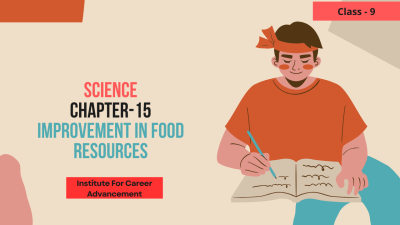
 Compare
Compare
Food is the basic need of all living organisms for their existence. Early man started hunting animals and used fruits and roots of plants to meet his food requirements. Food is required to perform several functions. It is required for growth, development and body repair. It also protects the body from diseases. Food supplies proteins, carbohydrates, fats, vitamins, minerals and water to our body. খাদ্য হল সমস্ত জীবের অস্তিত্বের জন্য মৌলিক চাহিদা। আদি মানুষ প্রাণী শিকার শুরু করে এবং তার খাদ্যের চাহিদা মেটাতে উদ্ভিদের ফল ও শিকড় ব্যবহার করে। বিভিন্ন কাজ সম্পাদনের জন্য খাদ্যের প্রয়োজন হয়। এটি বৃদ্ধি, বিকাশ এবং শরীরের মেরামতের জন্য প্রয়োজনীয়। এটি শরীরকে রোগব্যাধি থেকে রক্ষা করে। খাদ্য আমাদের শরীরে প্রোটিন, কার্বোহাইড্রেট, ফ্যাট, ভিটামিন, খনিজ এবং জল সরবরাহ করে।
0 Lessons
Hours

 Compare
Compare
Natural resources are the resources that exist in nature independent of human actions for their development. Some common examples of natural resources are air, sunlight, soil, water, plants, animals, and fossil fuels. Natural resources are naturally occurring materials. প্রাকৃতিক সম্পদ হ 'ল প্রাকৃতিক সম্পদ যা তাদের বিকাশের জন্য মানুষের ক্রিয়াকলাপ থেকে স্বাধীন। প্রাকৃতিক সম্পদের কিছু সাধারণ উদাহরণ হল বায়ু, সূর্যালোক, মাটি, জল, উদ্ভিদ, প্রাণী এবং জীবাশ্ম জ্বালানি। প্রাকৃতিক সম্পদ প্রাকৃতিকভাবে প্রাপ্ত উপাদান।
0 Lessons
Hours

 Compare
Compare
Biodiversity means different forms of living organisms or variety of life forms found in a particular region. Classification Classification of organisms is a system of arrangement of organisms into different groups and sub-groups on the basis of their similarities, differences and relationships. The major characteristics used in classifying the organisms into 5 kingdoms are Whether cells are prokaryotic or eukaryotic. Whether cells occur singly or in clusters. Whether the organism is photosynthetic or takes food from outside (heterotrophic) Organization of different body parts. জীববৈচিত্র্য বলতে একটি নির্দিষ্ট অঞ্চলে পাওয়া বিভিন্ন ধরনের জীব বা বিভিন্ন ধরনের জীবকে বোঝায়। শ্রেণীবিভাগ জীবের শ্রেণিবিন্যাস হল তাদের সাদৃশ্য, পার্থক্য এবং সম্পর্কের ভিত্তিতে বিভিন্ন গোষ্ঠী এবং উপ-গোষ্ঠীতে জীবের বিন্যাসের একটি ব্যবস্থা। জীবগুলিকে 5টি রাজ্যে শ্রেণীবদ্ধ করতে ব্যবহৃত প্রধান বৈশিষ্ট্যগুলি হল কোষ প্রোক্যারিওটিক হোক বা ইউক্যারিওটিক। কোষগুলি এককভাবে বা গুচ্ছগুলিতে ঘটুক না কেন। জীবটি সালোকসংশ্লেষক হোক বা বাইরে থেকে খাবার গ্রহণ করুক (হেটেরোট্রফিক) শরীরের বিভিন্ন অংশের সংগঠন।
0 Lessons
Hours